Greg O’s Garage: Why Do We in the U.S. Drive on the Right Side of the Road?
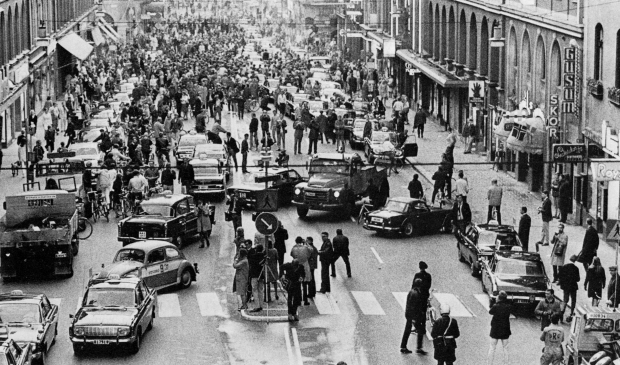
Bob Allen emailed us and wondered why we drive on the right side of the road. And why is the steering wheel on the left?
The answers are fairly simple and logical when looking at the history of road travel in the last few thousands of years.
Greg O.
Hello Howard, I really enjoy your newsletter; you do a great job. Looking at the pictures of the old cars makes me wonder when did they move the driver's position to the left side of the car? And were they driving on the right side of the road or what?
And of course I'm thinking of how they still drive on the left in Britain and many English colonies as well as Japan. How come with America's strong ties to England didn't we end up on the same side of the road? And for extra credit, does a more modern English car have pedals like ours (from left to right, clutch, brake, gas) or is it backwards, too?
So thanks again for all you do and I hope you might find my questions of interest...
Bob Allen
Current Statistics
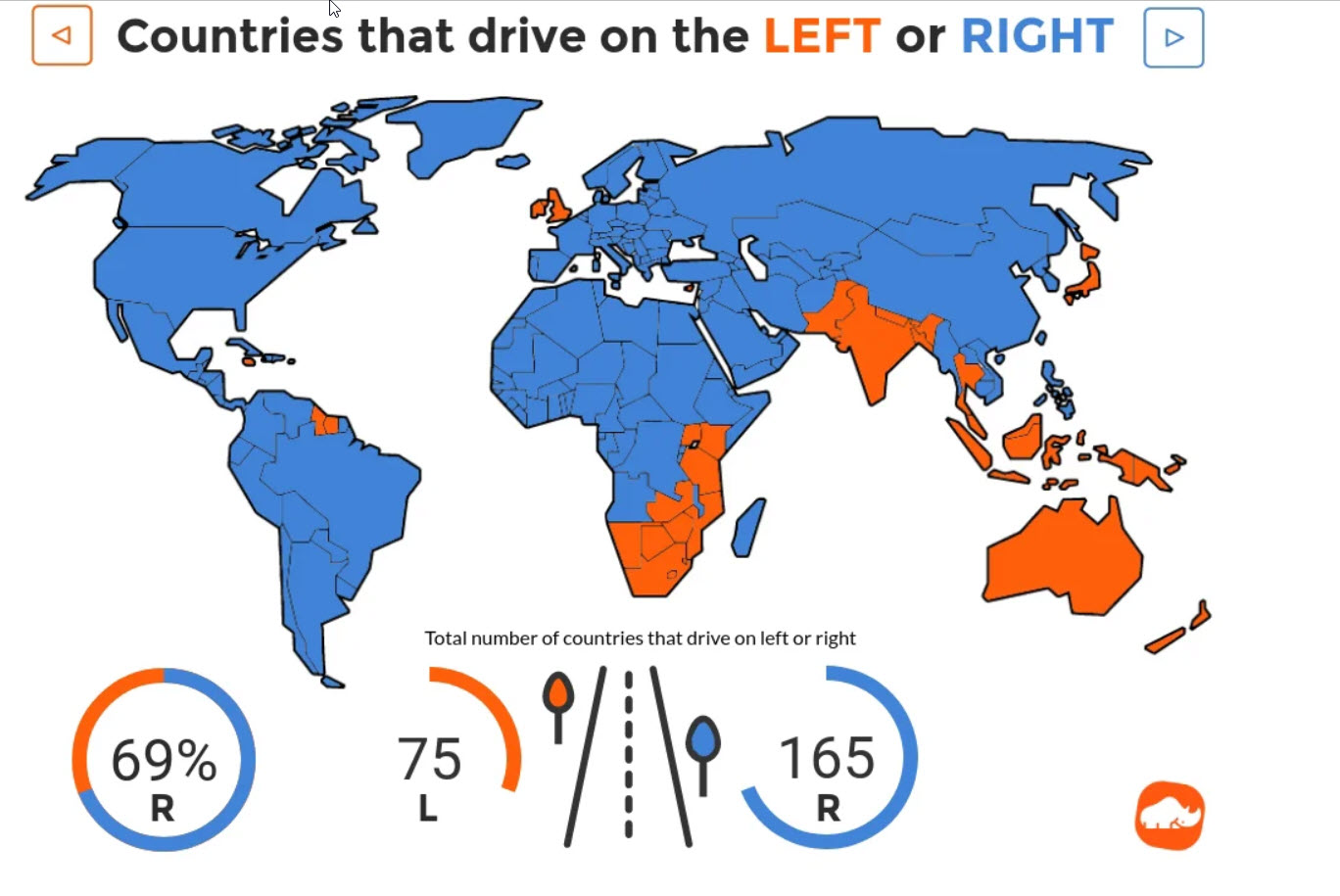
Roughly 1/3 of the world's population drives on the left, with 69% of the world driving on the right. Automobile steering wheels are also on opposite sides. But why? and how did this come to be?
On the road, on horseback
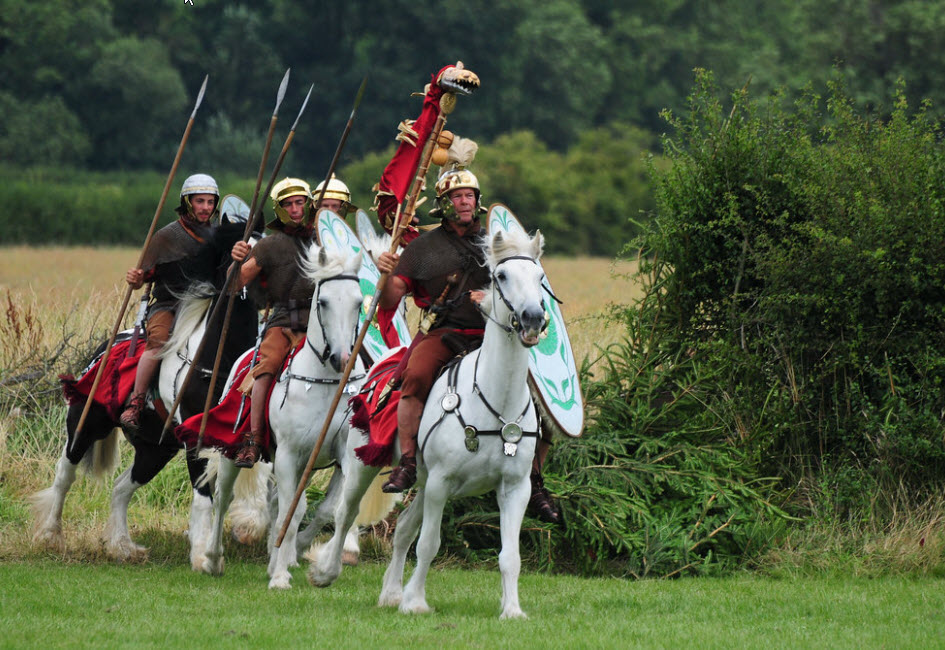
Origins can be traced as far back as man riding horseback.
The largest of early paved roadbuilders were the Romans. Romans had always traditionally ridden to the left of the road. The reason?
Most of the population currently and historically, have been right-handed. This usually meant a rider would mount his steed from the left side. This also dictated that riding on the left was better since it is much safer to mount a horse from the side of the road rather from its center. Being right-hand dominant also meant keeping you right hand free to greet fellow oncoming riders, but more importantly, access to your weapon with the dominant hand to repel attackers.
The Roman way of travel stayed with Europe for centuries until Napoleon. As Napoleon invaded each successive land, he forced the inhabitants to start riding to the right. Since Napoleon and France never made it to Britan, in an act of defiance, Britan never switched and even enacted the 'Highway Act of 1835' making it law to ride to the left.

Jousting in medieval times always saw the knights with their long, blunt lances held in their right hand.

During colonial times in the future United States, the anti-British sentiment ran so high, that every person did their best to undo everything that would have anything to do with Britan. This even included riding horses on the left-hand side of the road. So, colonists went to the right starting the U.S. custom of riding, then driving, on the right side of the road.
The Conestoga Wagon and Driving Position
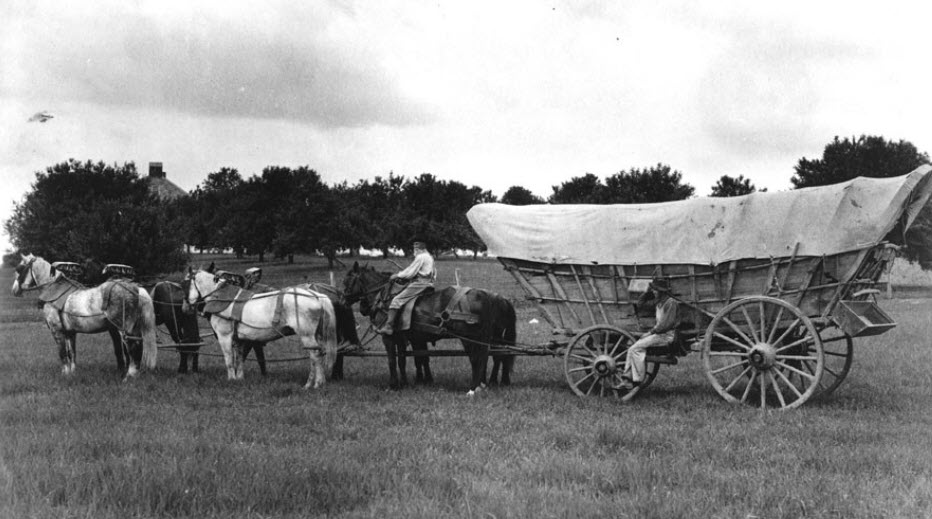
Change in the U.S. began with the early 1700's introduction of the large Conestoga wagon, named from their town of origin, Conestoga Township in Lancaster County, Pennsylvania.
The large Conestoga wagons were driven by a rider on the left rear horse to allow his dominant right-hand use for whipping the horses, as well as to keep an eye on the left side to oncoming wagons. There was also frequently a rider on the 'Lazy Board', a running board on the left side of the wagon from where to operate brakes installed on the large wagons.
Road improvements in the late 1800's started making drivers of these wagons to sit to the right side of the wagon to keep an eye out for new drainage ditches at the side of the road instead of oncoming traffic.
But what about Canada and Japan?

Canada originally started as a French colony, but later taken, and controlled by the British. Depending on whether your particular province was French or British founded, you drove on the side of the traditional founding. It wasn't until the 1920's, (and later in 1947 for Newfoundland) that the country became united in driving on the right to better match the U.S. and the rest of North America.
Japan found themselves wanting to modernize in the mid 1800's. They started with trains and rail and requested the help of Britan to devise their rail infrastructure. It was during this time of modernization that Japan adopted driving on the left.
Most nations today that have kept to the left side of the road are island nations that do not share any borders with any other countries where switching to the opposite side for world uniformity does not outweigh the financial cost of doing so.
Högertrafikomläggningen- the Swedish right-hand traffic reorganization
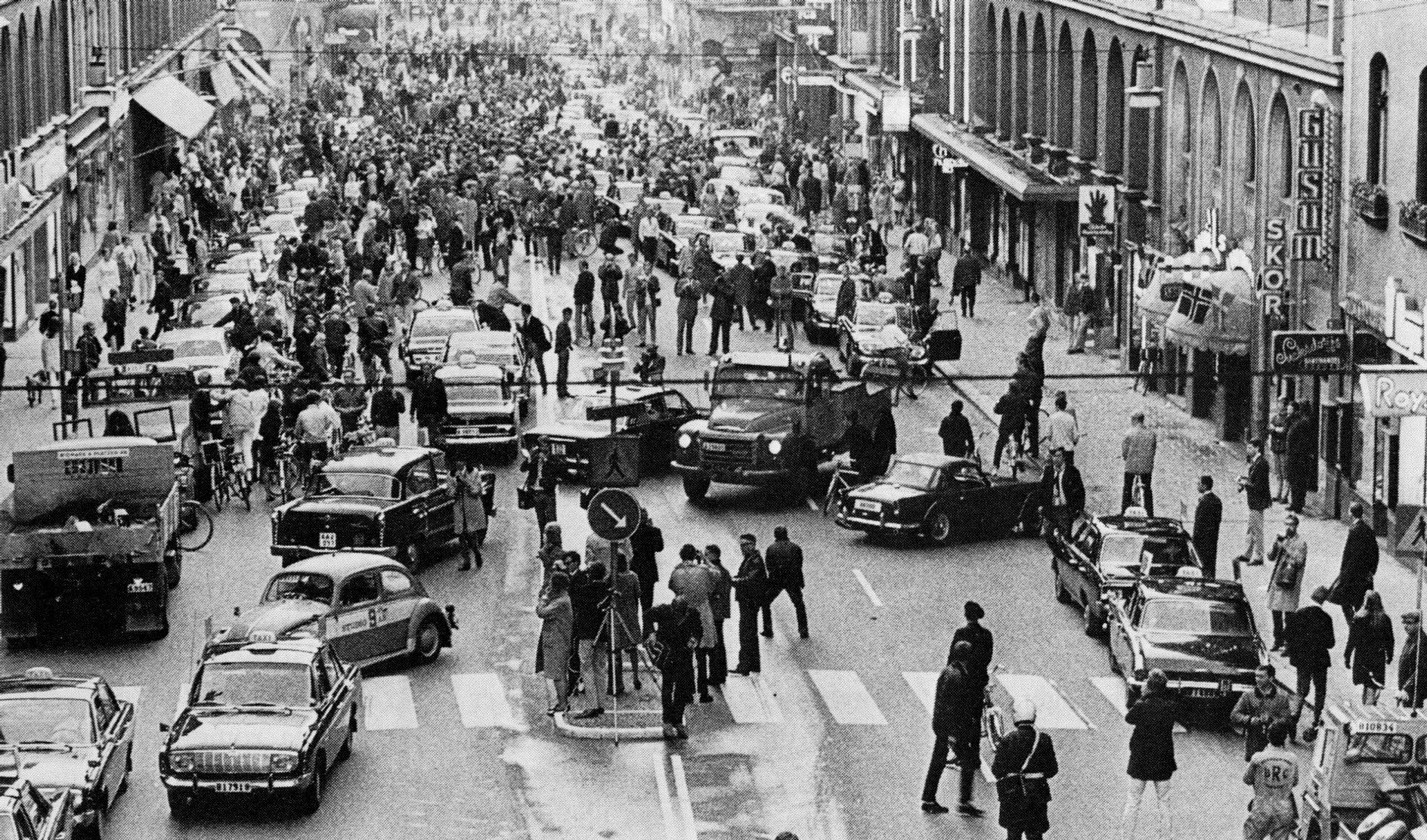
It's rare that countries switch sides, but it has occurred a handful of times despite the extreme financial burden of doing so.
Sharing borders with right-driving countries Finland and Norway, on September 3rd, 1967, Sweden changed from left-driving to right-driving. While making sense and providing seamless travel to neighboring countries, it was not a popular plan, but went ahead anyway.
On Dagen H (H-day), today called "Högertrafikomläggningen" (say that 10x fast!) all non-essential traffic was banned from the roads from 01:00 to 06:00. Any vehicles on the roads during that time had to follow special rules. All vehicles had to come to a complete stop at 04:50, then carefully change to the right-hand side of the road and stop again (to give others time to switch sides of the road and avoid a head-on collision) before being allowed to proceed at 05:00. The process went smother than one would imagine with a minimum of accidents of issues.
This policy change forever made driving in Sweden just a bit safer, as neighboring Scandinavian visitors no longer had to switch sides when entering Sweden.
The Automobile
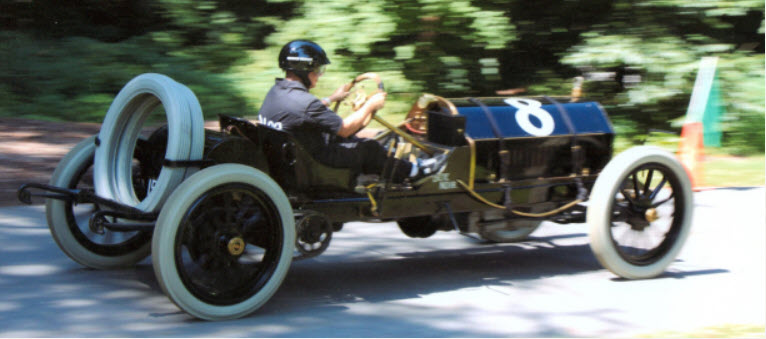
With the introduction of the 'new-fangled' automobile, from 1895 through about 1910, most car builders just followed what drivers in the Conestoga wagons were doing and built their cars with right-sided steering wheels. Many other manufacturers did build on the left since auto traffic was becoming heavier and more focus was necessary to oncoming traffic. Plus, there is a more commanding view of the entire road being more towards the center of it.
Henry Ford
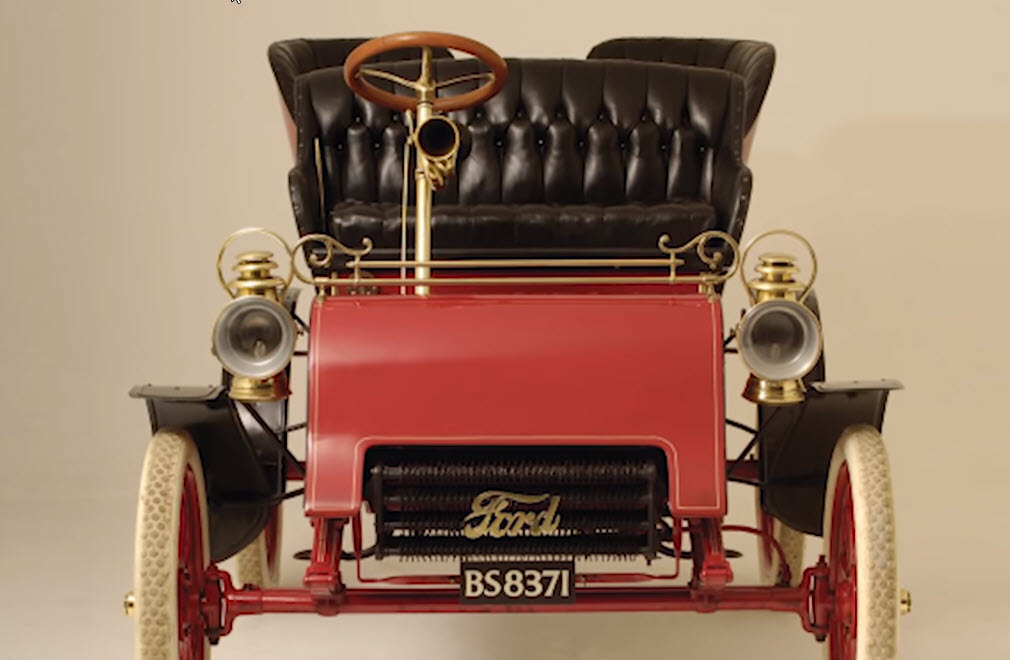
While Henry Ford's first cars had their steering wheel on the right, it was the introduction of the Model T that saw a driver position change.
The 'everyman', affordable, left-driving T eventually saw 15 million built and became one of the most popular cars on the road all over the world.
Ultimately, we can thank Henry Ford for the standardization of cars having the wheel to the left side, and American colonists for us driving on the right.

Comments
That was interesting. I often wondered about the origin of right and left hand roads and cars.
Myanmar (Burma) switched from driving on the left to driving on the right on Dec. 6,1970. As a former British colony, they drove on the left. The general who ran the country at the time, for reasons not quite understood, ordered the switch. Unlike in Sweden, where vehicles were made with LHD leading up to switch day, vehicles in Myanmar continue to be mostly RHD Japanese imports.
Thank you Howard for having Greg explain this to me. What made me think about it is all the old race cars (like the Black Beast) with the steering wheel on the right. So I wonder just when they changed the driver position in race cars. I suppose one thing to consider is at some point the cars didn’t require a mechanician to pump fuel so the cars could be designed with a driver basically sitting in the center.
I also asked how the pedals are typically positioned in a right hand driven car versus our left side driven: is the gas still on the right? I’m sure some readers and contributors to this newsletter are more travelled than I and have driven cars with the driver on the right…
So thanks again for delving into my question! —- Bob Allen
Bob-
Thanks for your email.
As far as right hand drive pedals, they are the same configuration as left had drive. ie; gas on right, brake in the middle and clutch to the left.
There was an aspect to this post about current car manufacturers making cars more ‘predominantly right-handed’ that I didn’t include, but might have to save that for part ll.
Not only are the pedals on RHD cars the same as on LHD cars, but also the shift pattern for stick-shift cars is the same: Lower gears on the left, and higher gears on the right, by international agreement. Most cars outside of North America and Australia have manual transmissions, so in drive-on-the-left countries, an American would have two challenges: Driving on the left, and shifting with the left hand.
On a related note this article from the “Technical World” magazine of Sept., 1913 discusses the issue of passing another vehicle on the right or left and where to put the drivers seat. The desire to do things different than the English following the Revolution had a part to play with this as well.
One more opinion - From “The Automobile” of August 21, 1909.
With India making left-hand drive vehicles (currently for global exports; e.g. https://indianautosblog.com/made-in-india-skoda-kushaq-left-hand-drive-model-export-begins-p325329) yet still has anti-British sentiments similar to America in the past on various issues (https://foreignpolicy.com/2022/07/01/colonization-legacy-india-independence-movement/), it would be ideal if India transitions completely to driving on the right side of the road to match most countries directly (i.e. land-bordering countries such as China and Myanmar) and indirectly (e.g. Afghanistan, Algeria, Armenia, Cambodia, EU (Denmark, France, Italy, Portugal, Spain, etc.), Israel, Lebanon, Morocco, Palestine, Qatar, Saudi Arabia, Syria, Türkiye, UAE, Ukraine, Uzbekistan, Vietnam, Yemen, etc.) land-linked to India which includes India’s strategic partner and alliance countries. It would be a challenge due to the amount of infrastructure to modify but IMO, with well-structured plans, strategies, and support (foreign assistance, new policies (e.g. deregulating right-hand drive vehicles for mandating left-hand drive vehicles), road design (e.g. turning some two-way roads into one-way to improve traffic flow without expanding existing corridor, pedestrianizing some two-way roads to provide more safe areas for pedestrians, etc.), etc.), it can be done. If switching to right hand traffic is still not very feasible despite well-structured strategies and plans, then at the very least, I hope India emulates the US Virgin Islands where left-hand drive vehicles have no problem operating safely on the left-hand traffic roads by legalizing left-hand drive vehicles for domestic use and no longer mandate right-hand drive vehicles.